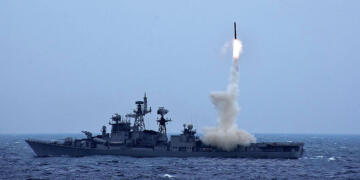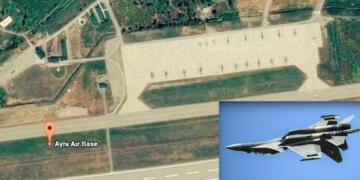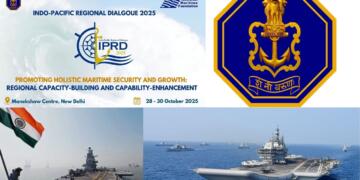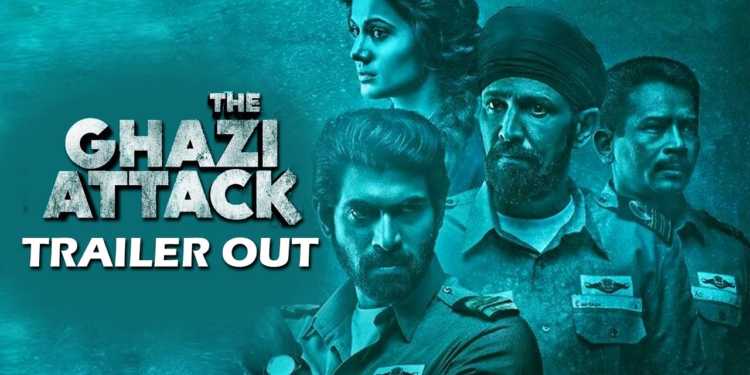Only a couple of days later, will Indian cinema turn over a new leaf, as one of the first under the sea based movies, bilingual film ‘The Ghazi Attack’ will hit the silver screens, on the 17th of February 2017, based on the supposed clandestine mission to destroy one of the rare lethal weapons that Pakistan armed forces ever sported, which was US imported war submarine, PNS Ghazi. Starring Rana Daggubati and Kay Kay Menon among others in an honored ensemble of classic actors, ‘The Ghazi Attack’ has already attracted enough eyeballs with its gripping trailer.
Interestingly, what few people know about this movie is that the director, Sankalp Reddy, is an avid historian himself, who had already written a book on the same issue, The Blue Fish, and got it published, to make sure, that he had the necessary copyrights for his upcoming movie. Smart move, eh?
However, what was ‘The Ghazi Attack’? What was so unique about the mission that it had to be kept under secrecy for years? For unraveling the secret, we might have to revert to the epic war of 1971, which had established the identity of INDIA as a major power in South Asia.
Trailer
Cut to November 1971. Previously named USS Diablo, PNS Ghazi, was a strapping Tench class, diesel electric submarine purchased from the US Navy in 1964. Only 7 years into the service, Ghazi was the only submarine of Pakistani Navy that could withstand the choppy waters of the Bay of Bengal, and hence deputed with an important task: destroy the Indian Navy aircraft carrier, INS Vikrant.
The reason behind this move was that INS Vikrant was a major player in terms of giving both the Indian armed forces and the Bangladeshi freedom fighters an infinite access to the required arms and ammunition, thereby denying Pakistan a hold on its imperialized territory of East Pakistan, now Bangladesh. Thus, the PNS Ghazi was entrusted with the task of sinking INS Vikrant, giving Pakistan Navy an upper hand. In a way, PNS Ghazi had the same status in the Pakistan Navy as the Patton tanks had in the 1965 war for Pakistani Army.
To add more trouble to the matter, INS Vikrant had developed a crack in its boiler, and its speed was reduced to a meager 16 knots, making it vulnerable to submarines. Had PNS Ghazi succeeded in its mission, probably Indian armed forces would have had a tough time dealing with the Pakistani counterparts, even if they were not defeated outright.
However, Indian Navy wasn’t Indian Navy for nothing. Having intercepted some of their moves beforehand, they decide to play a double cross. When PNS Ghazi had set sail for its mission on 14th November 1971, little did they know that their object of attack: INS Vikrant, was already whisked thousands of miles away to Port Blair, and instead of INS Vikrant, a British R Class destroyer, renamed as INS Rajput, was stationed in the exact location, masqueraded to give the feel of INS Vikrant. What is still a mystery, is the following: –
On the night of 3 – 4 December 1971, PNS Ghazi had arrived at the spot, ready to make its rendezvous with the supposed INS Vikrant. What happened in the course of the battle is still unknown, possibly wrapped and stashed away under Top Secret, CLASSIFIED files. However, what is well known is this: –
On the morning of 4 December 1971, the same day when the Battle of Longewala was about to begin in the Western sector, INS Akshay had gone for a routine patrol in the Bay of Bengal, only to notice that a plethora of blown up debris was floating near the same spot where INS Rajput was once noticed a day before. On close inspection, the team on INS Akshay deduced that the debris was that of PNS Ghazi. The job was done, and another of Pakistan’s supposed threat was reduced to smithereens.
The issue is still open for a dispute as to how did PNS Ghazi sink. According to Pakistani sources, the submarine hit its own mines while steering clear for the operation, sinking down to the seabed, while Indian sources claimed that PNS Ghazi was torpedoed by Kalvari class submarine INS Karanj, apparently codenamed S 21, which under a classified mission, ripped apart the PNS Ghazi. Both way, this gave India a huge momentum in the 1971 war from the naval perspective; and it is on this Indian version, that the movie, ‘The Ghazi Attack’, is based.
Whether the movie will do justice to the cause of the unknown heroes of the 1971 war is another issue to debate altogether, but with the release of a movie on such a crucial topic, we are at least assured of a simple but tough fact: don’t lose your faith in Indian cinema. There’s more to it than what meets your eye, and let me remind you, Bollywood is just not limited to the antics of Karan Johar & his coterie from South Bombay. Films like ‘The Ghazi Attack’ and filmmakers like Sankalp Reddy also EXIST!
Source:-
https://en.wikipedia.org/wiki/HMS_Rotherham_(H09)
https://en.wikipedia.org/wiki/PNS_Ghazi
https://www.scoopwhoop.com/The-Real-Story-Of-The-Ghazittack/#.ygr703j9m


































